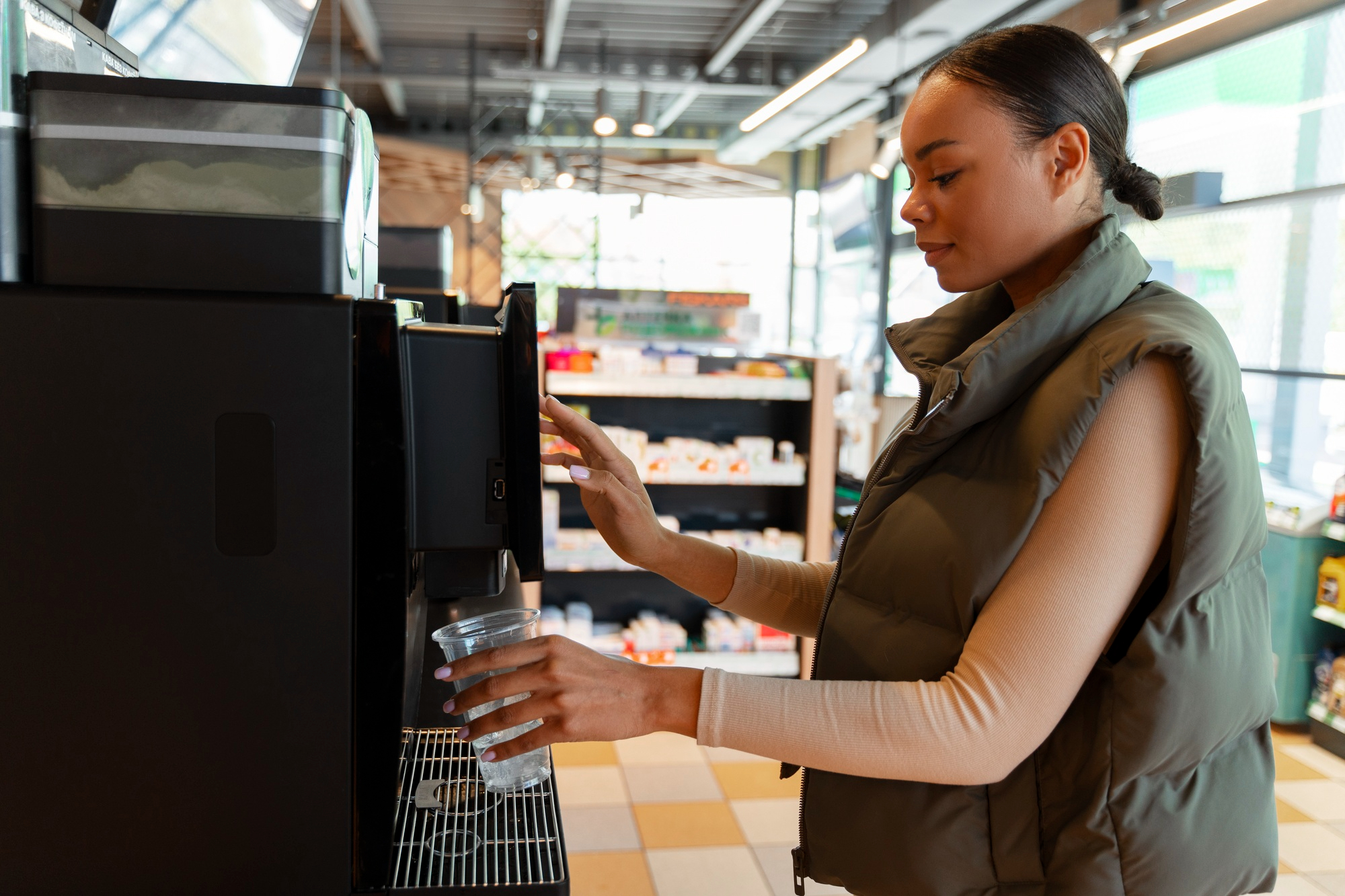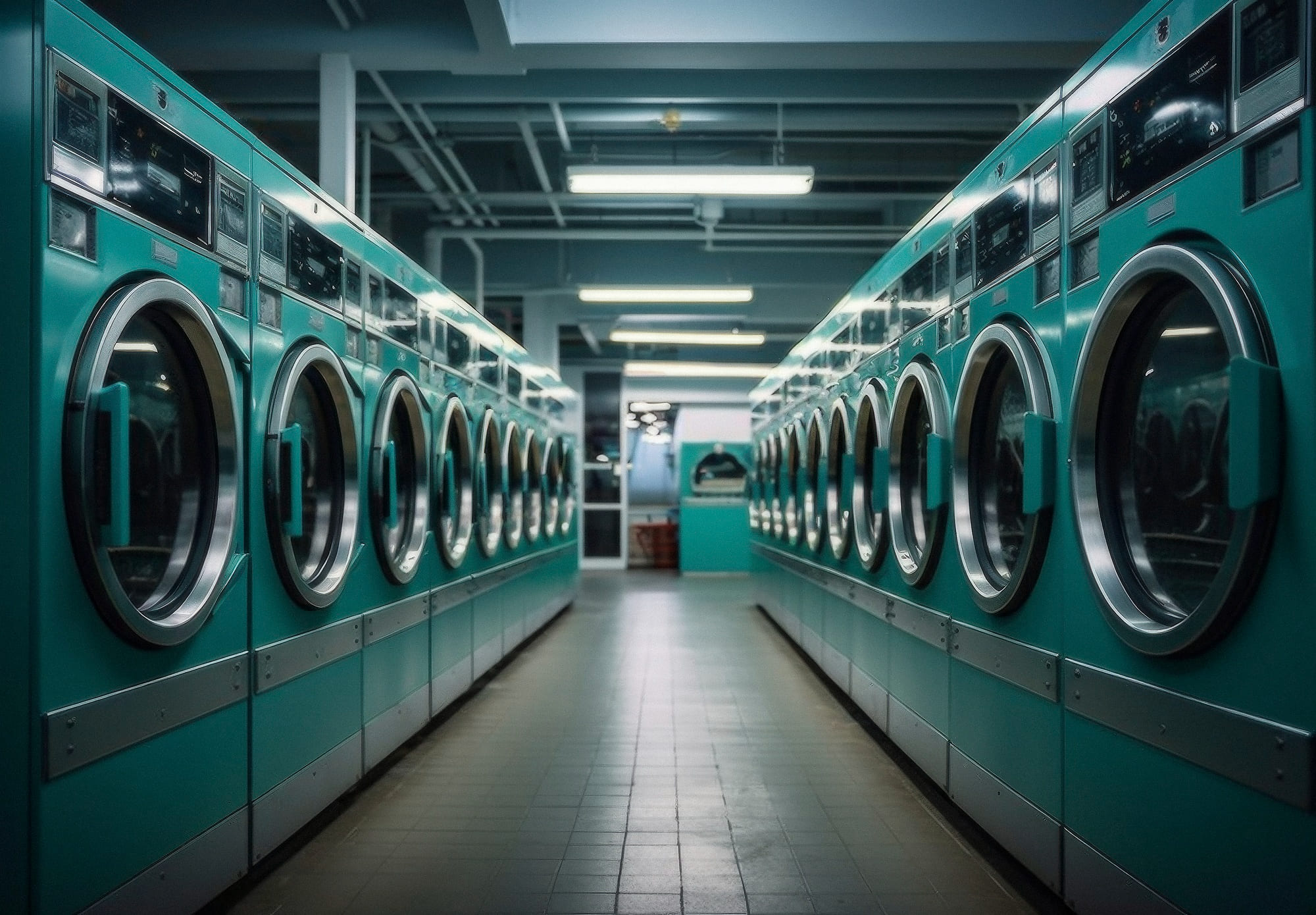The vending industry loves to talk about convenience, product variety, and machine placement. But when you dig into the data, something surprising emerges: customer experience is the real sales driver, often far more than price or assortment. Across hundreds of machines and multiple studies, the difference between a mediocre performer and a top-earner isn’t what you might think.
This article unpacks the myths, the numbers, and the real behavioral patterns behind vending performance. All data references are real, based on industry reports, case studies, and consumer surveys from NAMA, IBISWorld, and leading vending technology providers.
Myth 1: People make vending decisions in 30 seconds
Operators often assume vending purchases are fast and thoughtless. But in reality, decision-making takes longer. Across studies in the U.S. and Europe, average vending interaction time is 2–5 minutes, with customers pausing, browsing options, and sometimes checking prices before they pay (NAMA, 2023).
For example, machines equipped with large interactive screens, like Mondelez’s smart coolers, show 27% higher average transaction values compared to traditional button-based machines (Mondelez International, 2022).
Myth 2: Product mix is the #1 sales driver
Yes, it matters what you sell. But data shows product mix explains only part of sales performance. According to a 2024 NAMA study, similar machines with identical inventory performed up to 85% differently, depending on customer experience factors like payment speed, reliability, and interface design (NAMA, 2024).
That means things like downtime, payment errors, and poor refund systems hurt your bottom line more than not having three types of crisps. One European operator study found that keeping downtime below 5% increased monthly revenue by up to 25% (IBISWorld, 2023).
What actually drives repeat sales?
Customer frustration is your biggest enemy:
- Machine malfunctions were the top complaint in consumer feedback (109 documented incidents) (Euromonitor, 2022)
- Inadequate refund systems created 63 complaints in a single 6-month period (NAMA, 2023)
- Slow service or poor support ranked third (37 complaints) (VendingMarketWatch, 2023)
These aren’t just complaints, they’re lost revenue. Machines with smooth user experience and working contactless systems consistently outperform older models.
Devices like the Aurency A250, with integrated telemetry and real-time status alerts, help reduce unplanned downtime and proactively flag issues before they lead to lost sales.
Cashless isn’t optional anymore
In 2024, cashless payments made up 69% of vending sales, with mobile wallets dominating that share (Statista, 2024). Tap-to-pay (NFC) now accounts for 77% of cashless transactions, and machines that explicitly advertise Apple Pay compatibility saw an average 22% increase in revenue (Visa Europe, 2023).
Why? Because contactless payments are faster and more reliable. Mobile wallets in particular have faster processing speeds, leading to lower abandonment rates. Cashless users are also more persistent — they’re 35% more likely to retry a failed transaction than cash users (Square, 2023).
Aurency’s devices are built to maximize this trend. With support for NFC, QR code, and contactless cards out of the box, and a starting transaction rate as low as 1.85%, operators benefit both in speed and margin.
Screens sell more and smarter
The difference between a touchscreen vending machine and a traditional one isn’t just cosmetic. Touchscreens unlock:
- Multi-item purchases in a single session
- Personalized product suggestions
- Dynamic pricing and promotions
Touch-enabled machines generate average sales of €2.50–€2.80 per transaction, compared to €2.00–€2.20 for traditional models (Mondelez International, 2022). For premium machines like smart fridges or AI-driven coolers, average tickets climb to €4.25+ (FoodBev Media, 2023).
Demographics tell you where to invest
Gen Z and Millennials are the most cashless-friendly. In Europe, over 60% of 18–34 year-olds prefer mobile payment options (ECB, 2023). They also generate more impulse purchases, especially in environments like campuses or transit hubs.
Older consumers still prefer reliable, familiar interfaces which makes hybrid machines (with card and mobile support) essential. Additionally:
- Men buy more drinks and salty snacks (NAMA, 2023)
- Women show higher price sensitivity but prefer healthy and time-saving options
- Higher-income areas favor premium snacks and avoid sugary items (IBISWorld, 2024)
Understanding these patterns can help you adjust pricing, layout, and inventory by site.
The location myth: not all foot traffic is equal
Operators often overrate high-footfall environments. But data shows that environmental fit and visibility are more important than raw volume.
- Offices show weekday peaks but drop off sharply on weekends
- Airports and schools offer the highest sales per machine — up to €5,000+ annually (Vending Europe, 2023)
- Residential areas may average only 15 sales per day
In high-visibility spots, machines with clean design, fast payments, and large screens outperform legacy units, even with similar product selections.
Seasonality matters more than you think
In Europe, fall is the peak season for snack vending, while hot drinks spike in winter, and cold drinks dominate summer (IBISWorld, 2024). Chocolate drops in summer due to heat sensitivity. After major holidays like Christmas or Easter, vending usage often drops by up to 50%, particularly in office settings.
Operators who rotate stock seasonally or offer subscription options (e.g. daily coffee for €1.99/month) see stronger retention and repeat usage (VendingMarketWatch, 2023).
What drives loyalty?
Beyond convenience, loyalty is built on three factors:
- Reliability — working machines, no errors
- Speed — quick, smooth payments
- Availability — favorite products always in stock
Operators using Aurency telemetry tools report improved stock management, fewer missed sales, and easier integration with CRM systems for loyalty rewards.
Points-based loyalty apps or QR-code stamps (5th coffee free) show strong repeat use, especially among students and commuters (NAMA, 2023).
Conclusion
Most vending operators still focus on products and pricing. But the real performance drivers are often hidden in the customer experience. Downtime, slow payments, poor interfaces: these factors cost more than overpriced snacks ever could.
By investing in cashless infrastructure, smart screens, and data-driven stock management like the all-in-one system offered by Aurency, operators can improve not just sales, but loyalty and lifetime value.
Customer expectations are evolving. The vending industry has the tools to keep up, the winners will be the ones who actually use them.
References
- ECB. (2023). Study on consumer payment attitudes in the euro area.
- Euromonitor. (2022). Vending Machines: Customer Satisfaction and Service Trends.
- FoodBev Media. (2023). Mondelez expands smart cooler project across Europe.
- IBISWorld. (2023). Vending Machine Operators in Europe.
- IBISWorld. (2024). Seasonal Trends in Food & Beverage Vending.
- Mondelez International. (2022). Case Study: Smart Cooler Performance Metrics.
- NAMA. (2023). State of the Vending Industry Report.
- NAMA. (2024). Machine Performance Benchmarking Study.
- Square. (2023). Mobile Payment Behavior and Retry Rates.
- Statista. (2024). Share of Cashless Transactions in Food Vending.
- Visa Europe. (2023). Contactless Adoption and Sales Performance.
- Vending Europe. (2023). Machine Placement ROI by Location Type.
- VendingMarketWatch. (2023). Consumer Complaint Trends in Vending.



.jpg)

